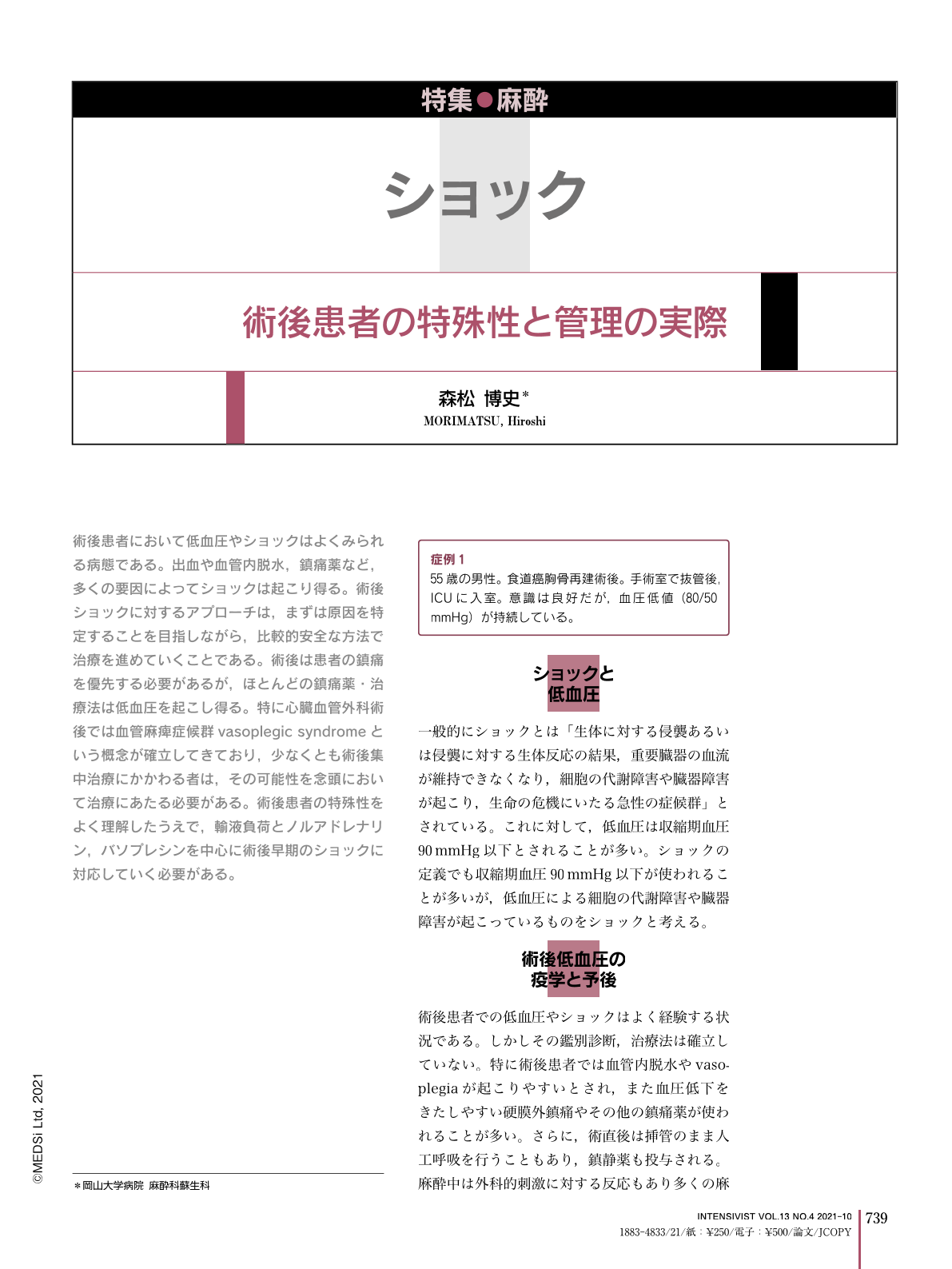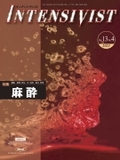Japanese
English
- 有料閲覧
- Abstract 文献概要
- 1ページ目 Look Inside
- 参考文献 Reference
術後患者において低血圧やショックはよくみられる病態である。出血や血管内脱水,鎮痛薬など,多くの要因によってショックは起こり得る。術後ショックに対するアプローチは,まずは原因を特定することを目指しながら,比較的安全な方法で治療を進めていくことである。術後は患者の鎮痛を優先する必要があるが,ほとんどの鎮痛薬・治療法は低血圧を起こし得る。特に心臓血管外科術後では血管麻痺症候群vasoplegic syndromeという概念が確立してきており,少なくとも術後集中治療にかかわる者は,その可能性を念頭において治療にあたる必要がある。術後患者の特殊性をよく理解したうえで,輸液負荷とノルアドレナリン,バソプレシンを中心に術後早期のショックに対応していく必要がある。
Hypotension (shock) is a common complication after surgery. About 20-60% of surgical patients suffer from this. The reasons for hypotension are multifactorial and complex after surgery, and thus careful diagnosis with early intervention is important. Differential diagnoses include bleeding, intravascular hypovolemia, epidural analgesia, acetaminophen etc. Especially after cardiac surgery, the vasoplegic syndrome is recognized as an important cause of postoperative shock. Intensivists involved in postoperative management have to understand the pathophysiology of postoperative hypotension and/or shock and try to correct this abnormality as early and safely as possible. The mainstays of treatment for postoperative hypotension and/or shock are volume resuscitation and vasopressors such as norepinephrine and vasopressin.

Copyright © 2021, MEDICAL SCIENCES INTERNATIONAL, LTD. All rights reserved.


